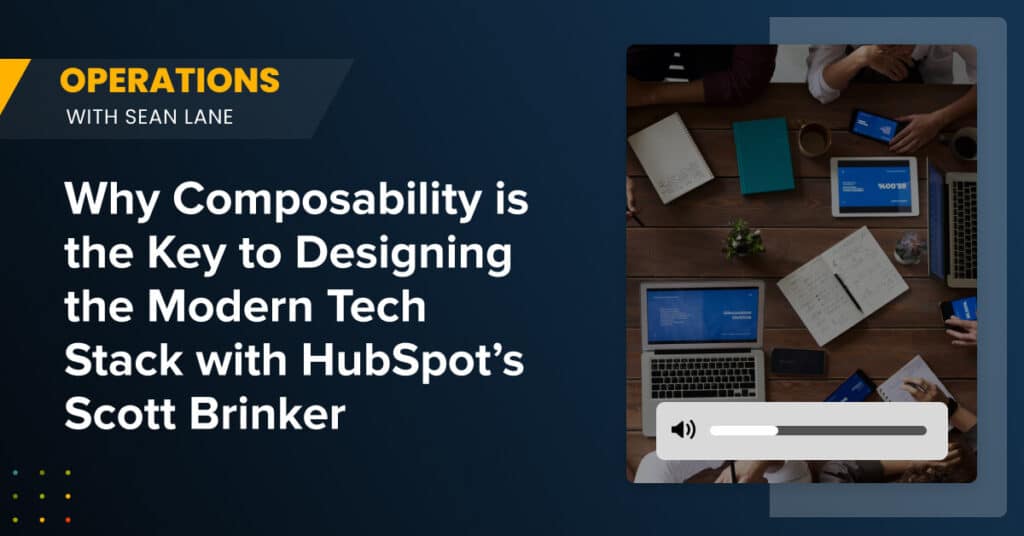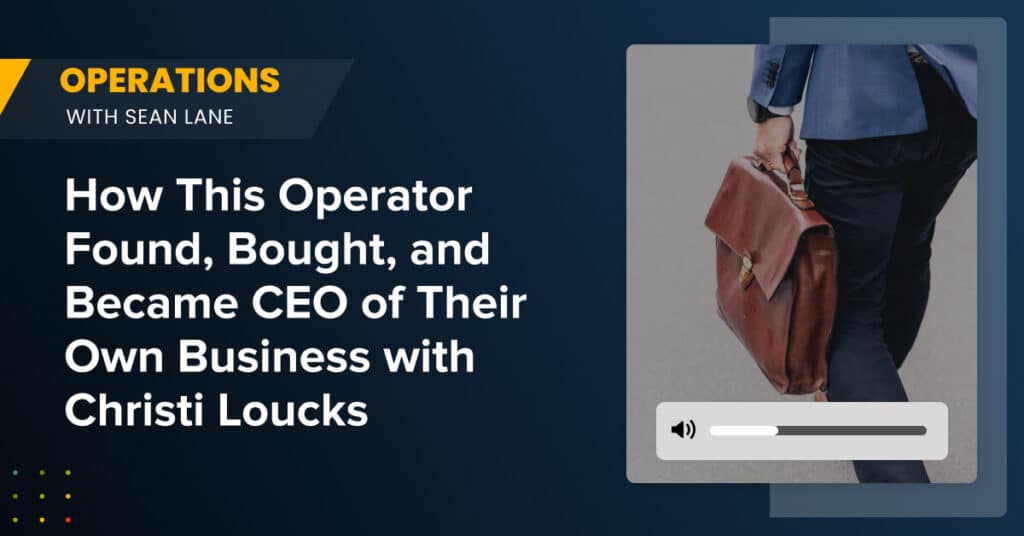The A to Z of Territories for Growing Companies
Overview
- When does it make sense to move to a territory based model? [1:37]
- What are some of the approaches you’ve taken in the past that may not have worked? [5:03]
- How did this practice come about? [10:40]
- How did you come up with this idea and where is it today? [14:44]
- What happens when this scales? [22:33]
- Have there been any shortcomings of this approach that you’ve had to address in the past? [26:26]
- Does this work at the SMB level? + Final Thoughts [27:51]
Introductions
Tyler
All right. Welcome to another episode of the Fullcast Fireside Chat. I’m your host, Tyler Simon, and I’m the head of customer success at Fullcast. We are a go-to-market planning and execution platform. Today’s topic, we are going to be talking about “A to Z Territories for Growing Companies”. I’m going to let you wonder what that is, and we’re going to kind of leave it a mystery until we get into the details. But our guest here is Randy Bernard. Randy, would you like to introduce yourself?
Randy
Hey, everyone. Randy Bernard. I run sales at a company called Apty. Been running sales teams for many years. Little tiny ones, larger ones. Apty, for anyone that doesn’t know, is basically a digital adoption platform. So for any technology out there that you’re using, like Salesforce or something, our software sits right on top like a pane of glass and just teaches people how to use and where to click and how to do stuff on the job rather than off in a classroom. So on screen guidance, that kind of stuff.
When does it make sense to move to a territory based model? [1:37]
Tyler
Great. All right, so let’s start at the very beginning, which is, “when does it actually make sense to move to a territory based model? What are the things we should be looking for in order to determine like, hey, it’s time to do something?”
Randy
Do you mean create a territory model at all or do you mean change from one to another?
Tyler
I would say let’s start with at all. “Right now we just have accounts entering the system, maybe we round robin, some people have 800 accounts because that rep has been here for two years and this person has got 50. And now we’re starting to see a little bit more imbalance and we’re starting to think about this little bit more strategically. So it’s like, okay, well, what is that point in time?”
Randy
Yeah, I think you just nailed it. I think in all the teams that I’ve either built from scratch or inherited and then tried to fix or rightsize, the time to do something is when what you’re doing is not working. Or not continuing to work. You know, you kind of nailed it. I’ve, too, started a lot of companies where we used round robin, and that was great. I think for me when I had to start getting into a more mature model than that is when I wanted economies of scale efficiencies. I wanted one rep to be able to focus on a cluster, whether that was in a geo or in a certain vertical, and be able to benefit from that where I can tap into that person’s expertise to sell to the same types of companies. If you’re doing that kind of a territory model, or maybe fly into a specific region and be able to go on site with a customer, but visit some other customers in the neighborhood while they’re there again. I think optimization is key. So whenever you’re feeling like whatever you’re doing is not fully optimized, that’s when it’s probably time to do something different.
Tyler
It’s almost the same thing for not only just, “hey, we need to do something”, but going back to your earlier clarifying question, which is “this isn’t working, and now we need to maybe make a change.”
Randy
Yeah. One of the first CEOs that I ever had in a startup, he said something to me, and I probably won’t be able to quote it directly, but I was like begging him to buy some software and I was promising to him it was going to change the world and fix everything. And he said, “I don’t disagree, but now is not the right time. Let’s do it manually for now. And then there’ll be a point in time where if we were to implement that process change or implement that point solution or piece of technology, it would take what we’re currently doing and really put it on hyper mode and create a lot more operational efficiencies. We’re just not there yet. Let’s do what that software does. Let’s do it manually for a little while.” So I think once you start gaining a lot of momentum, there’s times where you actually put something into a process and manage it. It’s when you’re going to benefit from ROI from it.
I will say there’s nothing wrong with the hodgepodge. I’ve been there where it’s like all leads route to the manager and they kind of dole them out. I’ve done that, too. But there comes a point in time where that’s just not manageable anymore. And the round robin just isn’t sensical anymore, especially for full cycle sellers in the territory. For SDRs, we still work when it comes to inbound on a round Robin today, but then they serve out to the sellers in a way that’s got a little more thought behind it.
What are some of the approaches you’ve taken in the past that may not have worked? [5:03]
Tyler
Yeah. Makes sense. What are some of the approaches that you’ve done territory wise or territory models that you’ve taken in the past that may have not worked? And I kind of want to lead us into this A to Z thing, but I don’t want to reveal too much yet.
Randy
Yeah, sure. Well, I mean, it’s not exactly rocket science. I think some people might even be able to figure it out by now, but it’s everything we’ve already mentioned. So I think in my career, round robin makes a lot of sense, and it’s easy to set up a lot of CRMs and marketing automation platforms come with that built right in. So it’s easy. Certainly more than anything, I’ve probably used a geo model.
Like typical geographic model. And I think it’s easy when you have two people. “West of the Mississippi.” It’s very simple. One guy takes the East Coast, one gal takes the West Coast. I think where those models start to break down for me in my history, in my career, where when you started needing to scale and you have 20 people or some number. And man, I stuck with geo models, dicing up states, regions, Northeast, West Coast. You can slice and dice them in a million different ways.
I even got to point where there were so many people on the team, we were slicing down not just to regions but then to States. And I’ve even more recently in my career, the very last time I ever had a territory model that was geographic in nature, when I swore I would never, ever do it again and I haven’t since. It was when there were so many people we were trying to slice and dice down to zip code and we had no names mentioned. I don’t want to cause anyone any undue stress. But this company I was at had some great investors and access to some unbelievable analysts.
And many of these series A, Series B startup companies don’t. We’re just people in a room trying to whip out our trusty sales calculator. “You take Idaho. Wait a minute. I’ll take Illinois.” And even when we are at this shop where we had access to these high paid analysts, this company I was with probably spent no less than 100 grand trying to reinvent the wheel, run mathematical equations, and let me tell you, after all the stress and the headaches, all it did was piss a ton of salespeople off. And those of you in sales know the last thing you want to do is piss a ton of sales people off.
It didn’t work. It was just impossible to figure out. Think about it. Because Tyler, geographic based territories are probably the most common. Not everybody has access to a system like yours. At the end of the call today, whether someone wants to call me and dive a little deeper into what I do or go leverage a platform like yours that already has it figured out. And can prescribe how to divvy up your territories. The one thing you don’t want to do is sit around like we did on the back of an envelope and try to reinvent the wheel and figure it out yourself.
Because every time I’ve tried it, I’ve determined that something was wrong. It was either super biased because let’s say the guy in Boston gets Boston. Okay, that’s pretty cool. He can go for coffee whenever he wants with whomever he wants. But the guy who works out of Boston but gets Silicon Valley, that’s not as easy. This person is spending a lot of time away from their family, or maybe there was just a disaster in that part of the world, or maybe there’s more money in Silicon Valley.
There’s always going to be a reason why doing it with a calculator isn’t necessarily going to get you equitable territories and then allow you to dole out quota effectively. Especially if you want to dole out quotas that are the same. I have seen geographic territories where admittedly they know the population of business or revenue or employees in that region is much larger, so they dole out a much larger quota to that person. That’s an interesting conversation as well. So a lot of complexity there, if that makes any sense.
Tyler
No, that makes total sense. I think you hit pretty much all of the key things that everyone struggles with in terms of going down into those Geo’s, making sure that they’re balanced. But at the same time, you think about even the inbound leads coming in that are round robin to the SDRs, but as they feed those into the reps, that’s not necessarily going to be equitable to the reps either, because they’re like, well, everything’s coming in for Silicon Valley. But I’m the rep for Nebraska. Nothing coming in.
Randy
Yeah, you’re right. And let’s be honest, I don’t think the marketing teams yet have figured out how to create perfect, equitable, inbound demand generation equally across the country.
Tyler
It’s a hard problem.
Randy
It is. And then there’s events. Everybody’s got this geography, but if we go to Dreamforce in San Francisco and it just happens to be a ton of people that briefcase in and didn’t have to fly. I’m just making this up. But 80% of the leads are coming from California, when we get back to head office, is that fair? Does one guy with California get all the leads, or do we dole them out and split them up?
How did this practice come about? [10:40]
Randy
I think one of the things you asked initially when we were prepping was like, how did this practice come about? Why did I even think about doing differently? Maybe I don’t want to hijack your narrative, but maybe we could transition into that.
Tyler
No, this is exactly where I’m headed. So, yeah, keep going.
Randy
Well, here’s the thing. If you’re on this call live right now, I see some people, or you listen to it in a year from now, I think the first question to ask yourself is, “do you even care about being fair and equitable?” Because I know a lot of sales managers out there that don’t they’re like, “Here’s the thing, just go make it happen, hit your number and you’re out of here.” Hey, many organizations have pulled that off and been successful doing it.
I think the reason I personally got to this point in my life is, if we back way up, and I took three notes. The only three things that brought me to this place. For one, I personally, my style is that I’m a big fan of fair. I’m a fan of fair. I think everybody deserves an even shot. And one of the reasons is not just because I’m a nice guy, which I consider myself, but if I’m not going to be there at the front, then do people get annual reviews? Are we going to treat those differently? Are they going to be held at different times? Am I going to be tougher? I’m just a fan of keeping things even-keeled so that when I get to a point where I’ve got a guy that’s underperforming, at least I can sleep well at night knowing that he had the same opportunity the next guy did. He just didn’t take advantage of it the same as the next gal did.
So, why am I a big fan of fair? I’ll tell you why. Early in my career, as I was a new sales manager, a new director of sales or VPs sales, and this may not be true for everybody, but I found that an abundance of my time, tons of my time was spent not on the things that were actually going to make us a lot of money. Coaching, training, helping. It was putting out fires from a lot of these types of problems. Territories were all out of whack, so there was constantly someone moaning or groaning and that became a major time suck for me and a thorn in my side. It’s why, take territories aside, I came up with my own comp plan that I’ve used for many, many years that I finally figured out to be one that doesn’t cause any stress or anxiety for anybody. Everybody thinks it’s fair. That’s another thing that took a lot of my time was just constantly having to go back and look at territories and comp plans.
So I like to eliminate distractions. And I’m almost done on this rant, but this is what brought it about. As I said to myself, “if I can eliminate all these distractions that aren’t making any money, it’s all the more time.” And this is why you guys have a platform for it. There are sales managers out there all over the planet that are sitting in rooms talking about things that you guys already figured out. There’s already a platform that solves it for you. So I didn’t have Fullcast in all the years I was growing up in sales, but I was so frustrated with the distractions and I had to eliminate them. And the last thing I’ll say is, I was brought up in servant leadership and so just a quick little Sidebar. I believe truly that I work for my salespeople and they don’t work for me. So if you think about that for a moment, it’s my job to work for them every day. And what that kind of culminated in was that my philosophy for almost two decades has been every day that I go to work, if I can remove the obstacles that stand between my people and their quota, that’s my job.
It’s no more difficult than that to constantly remove obstacles. And for me to put a pin in it here, territory was a massive obstacle between people and hitting the role because it was either not fair, not even, too far away, didn’t make sense. It was all sorts of things that caused me and the reps headaches. And so I needed to come up with a better way.
How did you come up with this idea and where is it today? [14:44]
Tyler
So let’s talk about that better way. Where did you land? And I think we’ve clued everybody in on this A to Z piece, but we’ve also said there’s a little bit of math behind it, rather than just splitting stuff up. So let’s talk about that evolution and where you came up with the idea and where it is today.
Randy
Well, I had spent so much time and money and watched other people spend so much time and money trying to figure out population, revenue, all this other stuff. And without maybe the secret sauce your platform has, we were unable to pull it off, in any sensible way, on the back of an envelope, or in an Excel spreadsheet. No matter what resource we tapped into.
So I said, what is something different? I just kind of sat around and I was like, “how could I just totally look at this from a different lens?” And I call it an “Alphatory”, which is kind of like a weird word. It’s kind of kooky. But we call it our “alphatory”. It’s our territory, and it’s because it’s based on the Alphabet. And maybe I’ll share my screen and pull it up for a minute. But I said to myself early on, I said, “What if I just split up planet Earth using letters of the Alphabet?” But then I ran into the same problem. I said, well, how can I make that fair, right?
We’ve all watched Wheel of Fortune, right? Like “R, S, T, L, N, E!” They even picked those letters for you now, because that’s what everybody was picking for, like a decade, because they’re the most common letters. And how could I ever regulate? Like, if I gave some guy the letter A, how could I ever be sure that with inbound, I’d get an even number of, apples coming inbound and that they would have an even shot at going outbound?
So I realized there had to be a little more behind it and a little math behind it. But luckily for me, it’s out there. And maybe what I’ll do is I’ll just share. So this is what happened. I said, “I need a better way. I’m frustrated.” I came up with this. “Is it possible to split up the Alphabet in some meaningful way?” And I believe I figured out I don’t think we have time to get into all the math. If anybody wants to reach out to me directly, you can find me somehow through this webinar on LinkedIn. I’m happy to walk you through it, but maybe I’ll share my screen real quick and show you what I did, and then I’ll tell you why it ended up working so well for me. Let me share my screen. All right. Do you see this massive hodgepodge?
Tyler
We do.
Randy
Okay, so let’s focus right here for a second. What I realized was, with publicly traded companies, there’s a finite number on the Nasdaq and New York Stock Exchange. I realized that there’s some brilliant people that have already done the math by using the Oxford Dictionary to find out how often and how often words in the Oxford Dictionary start with a certain letter or reappear throughout letters. Then, you’re going to think I’m a total geek, like a nerd here. But Morse code.
Let me just stop sharing for a minute and just get back here. You know what’s interesting about Morse code? They had to figure this out long before there were people selling SaaS. And it’s because the letter E is a dot. If you’re like. “SOS”, you’re in trouble and you need to send more code. It’s much easier to use a dot for E because it’s very common, and like a Z or an X might be dash dash dot dash dash. It’s just math. So what I got some assistance from in my career was trying to normalize all this math.
So what we did with a lot of math that I’m not going to bore you with today is we blended a ton of these averages, we normalized all the weight, and it allowed me to create Alpha-territories that are, for all intents and purposes, fair.
Now, look at this. Here’s an example of what got spit out the other end. Right now, at Apty, I have six enterprise sellers on my team. Gordy, Mike, Jamie, Brett, Belle, and Tommy. When leads come in, inbound, we don’t look if they’re in Georgia or if they’re in Louisiana, if they start with the letter C, they go to Gordy. That’s his territory. So Champion comes inbound, very simple to know who this goes to. Now, more importantly, in this day and age, it’s less about the inbound. I shouldn’t say less about it’s, even as equally important, if not more about outbound. Knowing who your ideal customer profiles are and going outbound and trying to do account based marketing, account based sales, and trying to penetrate your ideal customer profile because you know that they’re experiencing pains and challenges at the organization that your technology can solve and that can fix.
So now let me just stop sharing my screen. Let’s say Gordy, for instance, C, E, K and Y. Actually, I’m not going to stop sharing my screen. Let me show you one more thing before I go back to my camera. He has C, E, K and Y. Now, let’s go back to my little thing here. Look at the bottom. I don’t know if you noticed. Let’s just go to the letter C. Here are all the publicly traded, nevermind everything else. These are just the publicly traded companies that start with the letter C. And I’ll ask you this, as I Scroll through just one of Gordy’s letters, we’re up to 300, 400, 500. Do you think Gordy has any shortage of territory here? Let’s be honest. If he’s going to go outbound, I’m giving him just in the letter C alone, 576 companies just publicly traded ones alone. And there’s another ecosphere for companies he can target that are not publicly traded. And that’s just one of those letters.
Right here we’ve got it all here at his disposal. But let me tell you this. Here’s what now changes about Gordy’s life. Now instead of Gordy saying, “who can I get in Madison, Wisconsin?Oh, my God. How many head offices with parentchild relationships in corporate headquarters are located in Boise, Idaho?”
No, here’s what Gordy says. Gordy says, “I’m going to look at my territory differently now. I’m located in Boston. So the first thing I’m going to do is I’m going to find five, six, seven companies that start with the letter C that are headquartered right here in Boston so that I can ask them to go out for coffee, take them for dinner, and I can have access to show up on site and meet them in person, assuming the pandemic allows for that. But also we have a head office in Austin.”
Gordy could say, “I’m also going to pick three or four companies that are headquartered in Austin so that it gives me a reason and excuse to go see some people in the Austin headquarters, but schedule some meetings while I’m out there, visit some customers. But what I’m also going to do is I know there was a big Hurricane over here. I’m going to stay away from there right now. I know that there’s a lot of early adopters in the Silicon Valley. So I’m going to pick another five or six companies right in San Jose and out in San Francisco because my best friend lives in San Francisco. So I’m going to fly in and I’m going to meet a bunch of companies.”
So it allows Gordy to start really doing territory planning, but not just in Boise, Idaho, or in his three zip codes where he’s limited to whatever our funky algorithm gave him. He can go anywhere he wants on planet Earth as long as he stays within that Alpha-territory. So it allows him to get really strategic with verticalization. Maybe there are places in the country where there’s a lot of Fintech companies. So he wants to pick four or five in the financial district in New York City and he can go there and see them all at once. But he doesn’t own all of New York City. Has that ever been fair? And now I’m poking fun. I think you have a platform that has found some algorithms to make that fair and equitable. I never could on the back of an outcome.
What happens when this scales? [22:33]
Tyler
Yeah. What happens when this scales? Like what happens when you get more than 26 reps?
Randy
Yeah, that’s a really good question. I don’t know. I will say that if you think about it logically for just a minute, let’s say that you had double. Let’s say you had 52 reps.
Randy
To think that someone has BA through BS and another person has any company that starts with the letter BT through BZ. I can tell you right now there are tons of companies on the planet. I’m just saying, think about this for a second. I haven’t increased or decreased the number of companies on planet Earth. I’ve just put them in buckets that are a little easier to, distribute out in a fair and equitable manner.
One thing before I forget, a lot of people have asked, “who gets the letter T for ‘the'” in the same sense that the stock exchanges lop that off. For “The Container Store”, that’s a C. So we just lop the “the” off. And then we also, I don’t know if you noticed in there, but one of my territories includes numbers and symbols. So like 3M, that falls in a very specific place. So again, I haven’t increased or decreased how many companies are out there on planet Earth. I’ve just provided a different lens for how people can step back and not be forced to constantly fly into New Jersey. Or forced to constantly leave their family or forced to go to an area of the country that just had a natural disaster or forced to be the guy who got “the best territory.”
How many conversations have we had in our lives about, “Oh, well that’s not fair. Jimmy made the most money because he’s got the best territory. I’ve got the worst territory. And that’s why I didn’t get my number.” This is what I was going for when I had to find a different way.
Tyler
I think it’s important to call out here and this is probably pretty obvious, but I also just want to say it is that when we first started talking, you’re like, I do this A to Z thing. I’m like this sounds scary. Because when most people think about A to Z, they’re like, “here’s A to D, you get that, E to J or whatever, you get that.” And there’s no thought behind to your point with like the Morse code and the weighting of the companies on the stock exchange, etc. Without that logic there, it becomes actually unfair if you just kind of do the A to D thing. So as soon as you do that and you pick out these codes and make these things balanced, it becomes really simple and to your point, really easy for reps to find accounts, because that’s the other problem that always happens.
It’s like, well, we’ve got to wait for the data to get enriched. So we know this, but the IP address says UK, but the address is actually in the United States. Who does that go to? Like, all these problems arise, I think by simplifying this makes the process really easy for your sales reps.
Randy
I tell you, you’re right. I tried it that way before. This is many revisions down the line where I started getting back into using analysts and math to normalize all these weights and measure them. That’s why my territories are weird. They’re not ABCD, right? They’re this hodgepodge, but it’s because they’re as fair as I could possibly get them through math and science using that different lens. Also, I’ve found that it allows my sales people to feel like they’re far more in control of their own destiny. They’re not forced into the Southwest or the Northeast. The world is their oyster and now they feel much more in control of what they’re up to.
Tyler
Allows them to get creative.
Randy
Yeah, that’s for sure.
Have there been any shortcomings of this approach that you’ve had to address in the past? [26:26]
Tyler
Can we poke holes in this? Are there any gaps that you’ve seen with this that you’ve had to close in the past, or is it just you feel like it’s a well oiled machine?
Randy
The only thing that we’re trying to do now at Apty is our head of sales enablement, working alongside our Salesforce administrator is just trying to write some code using VisualForce or whatnot, so that the system can automatically identify the letter that it starts with and look at a legend to see who currently owns that letter to route appropriately. I haven’t taken it that far yet. Maybe the reason is we have about 30 people on the sales team now, but we have only less than 15 that are direct sales people. We have different segments. We have enterprise and then mid market and channel and partners. So I haven’t gotten to a period yet where they were to your point, before, 26 or 42 or whatever, 52, whatever the number is where we have real scale and maybe it breaks.
Maybe at that point you don’t have the problems that I was solving for. Maybe it’s more like this small, intimate company where everybody knows each other and works together, keeping that as equitable fair as we can for as long as possible. I think that’s where the real value is. So everybody is racing the work with the same fair shot at hitting their numbers as everybody else and it makes for less excuses.
Does this work at the SMB level? + Final Thoughts [27:51]
Tyler
Does this work at the SMB level? With SMB companies typically like, let’s say 100 employees or less because those aren’t necessarily publicly traded companies that you’re targeting. So if you are kind of going after that, does it still work that way?
Randy
The only reason I even looked at publicly traded companies was just to get another measuring stick outside of Morse code and Oxford Dictionary that I could normalize against. Let me tell you, I don’t know any small company on planet Earth whose name doesn’t start with a letter in the English language. I don’t think it breaks anywhere. When it comes in and it’s in your territory. All yours. When you’re going out, use that as a lens and then do all your other account based research reading 10-K’s, listening to earnings calls, whatever you need to do to identify if someone’s in market, but doing it through that lens I don’t have to look anymore again at Detroit. I can look at planet Earth and the world is my oyster as long as they stay within my Alphabet I haven’t found it to break.
And Furthermore, I’ll tell you, it’s been years that any of my reps have come to me with an issue about territory. I’ve just eliminated that for my entire playbook. There’s nothing to talk about. It works. I guess as a closing note, sorry for sales managers out there. Imagine that. Imagine if you could take the ten conversations that you have most often, that are just getting in the way and eliminate them. Get a good comp plan, have a fair and equitable territory and all the other sorts of things that’s what I’m trying to do is just get down back to the work.
Tyler
That’s a great way to go out on. I think we’re right up on time. Randy, thank you so much. I really appreciate it. And till next time.
Randy
Until next time. Thank you very much, Tyler. You the man.
Tyler
Yeah, have a good one.
Randy
See ya.










